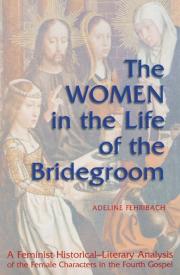Adeline Fehribach
Showing the single result
-
Women In The Life Of The Bridegroom
$24.95Add to cartWomen in the Fourth Gospel appear at significant moments in the life of Jesus and seem to move his ministry forward. Certain passages in the stories involving women, however, tend to marginalize these women. How are readers to reconcile such divergent characterizations of women in the Fourth Gospel?
Unlike most works that approach the topic of women in the Fourth Gospel from a historical-critical perspective, The Women in the Life of the Bridegroom visits it from a historical-literary perspective, illustrating how a first-century reader would have understood the characterizations of the women. Adeline Fehribach, S.C.N., shows that the author of the Fourth Gospel drew on the literary and cultural conventions of the day to portray the female characters to support the descriptions of Jesus as the messianic bridegroom, and that the ancient reader who was familiar with these literary and cultural conventions perceived the women fulfilling the role of mother of the messianic bridegroom, betrothed/bride of the messianic bridegroom, or sister of the betrothed/bride of the messianic bridegroom. Such an understanding of these women helps to explain those aspects in the characterization that appear to be positive as well as negative from a contemporary perspective.
Fehribach identifies five aids for uncovering the literary and social conventions that formed the first-century readers’ “horizon of expectation” with regard to the female characters in the Fourth Gospel: The Hebrew Bible; The Hellenistic-Jewish writings; popular Greco-Roman literature; the concept of “honor and shame” as used by cultural anthropologists for the study of gender relations in the Mediterranean area; and the history of women in the Greco-Roman world. Information about women from these areas provides the reader with the “cultural literacy” necessary to understand the text as a first-century reader might have understood it.
Furthering the literary analysis of the Fourth Gospel, The Women in the Life of the Bridegroom contributes to the historical-critical discussion regarding the Johannine community and advances the use of feminist biblical hermeneutics. By illustrating that the author uses female characters to support patriarchal values and marginalizes them after they have fulfilled their literary purpose, this work firmly places the Fourth Gospel within its Greco- Roman and Hellenistic Jewish literary context.

